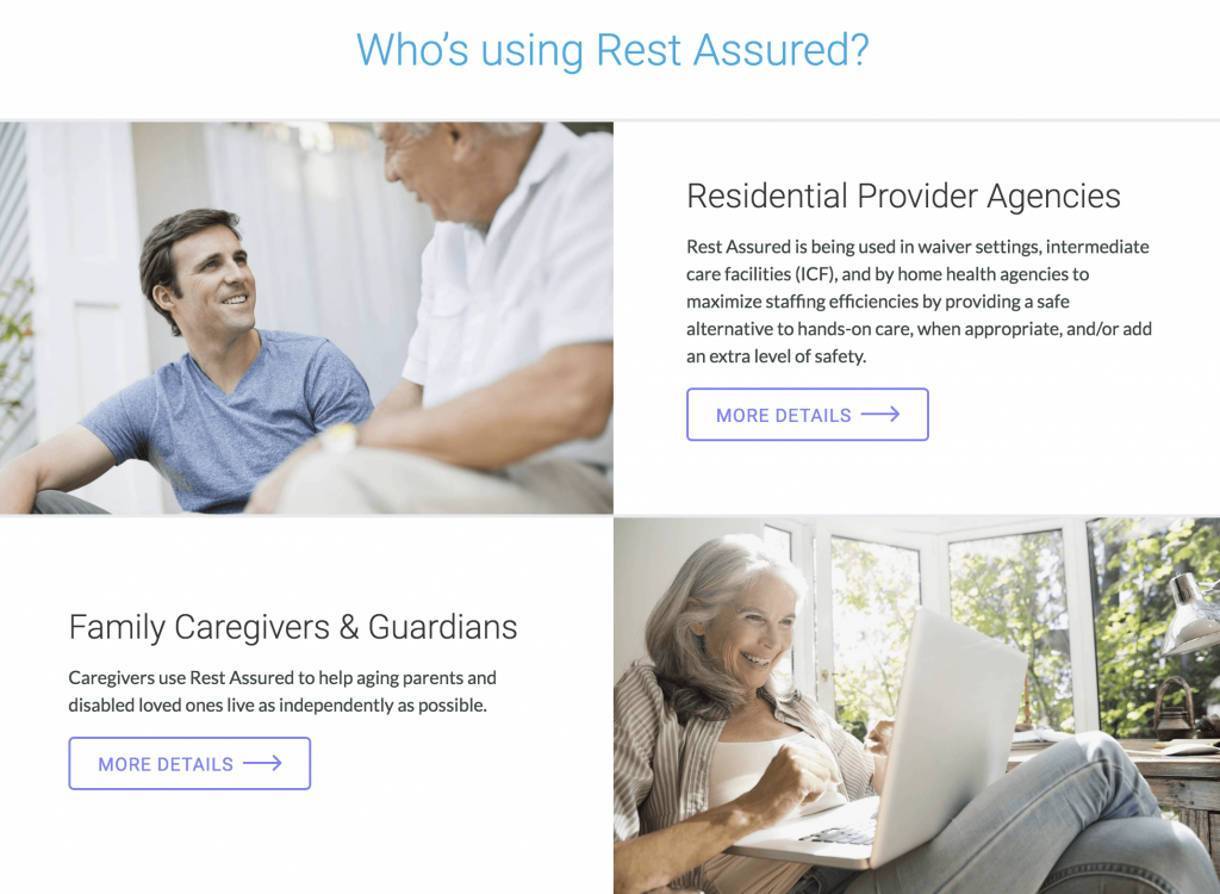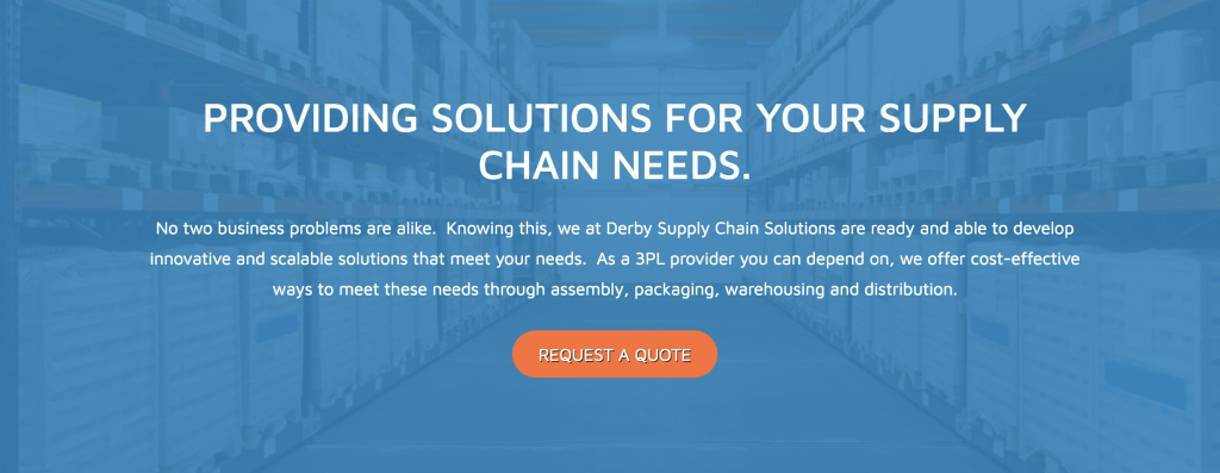While business-to-business (B2B) websites and business-to-consumer (B2C) websites are both designed to drive measurable results, the web designs that succeed with B2B audiences are often very different than those for B2C customers. Just as the products, services, and goals of different companies will vary, so should the websites these companies use to help promote their business and drive revenue.
Need effective B2B or B2C web designs for your site? We can help.
Get a Quote
B2B websites are often deficient and ineffective because many B2B businesses fail to recognize the need for a different design approach to their website(s). They may try to echo successful B2C web design techniques, rather than focusing on what their distinct B2B audience wants. That’s why it’s rare to encounter great examples of B2B website designs when browsing the web.
Here are key differences between B2B and B2C marketing to help with planning a B2B website design:
1. Single Customers vs. Audience Groups
B2C Websites
One of the more obvious and glaring differences between B2B and B2C websites is the audience. Marketing and design teams will put a lot of effort into defining buyer personas for a B2C website.
A good B2C website will even personalize the website for the individual consumer, based upon purchasing and browsing habits of those personas and individuals. However, in the vast majority of B2C customer buying cycles, the same person is targeted throughout the purchase funnel.
B2B Websites
This is not the case for most B2B websites, which must cater their user experience to vastly different personas who may potentially become a new lead. B2B marketers are often targeting an audience group of 3-4 people at certain organizations. This can complicate the information architecture of their website, because they’re trying to strategically address a wide variety of pain points.
B2B websites can be designed to serve audience groups in a variety of ways:
- Persona self-selection, such as a homepage section that says “How we help Person X, Person Y, and Person Z”
- Keeping website copy high-level, while also offering downloads of data-heavy case studies for more technical/engineering personas who want a deeper dive
- “Why Us?” pages that articulate the main value proposition of the B2B company
- Investing in data visualization that presents technical information in a clear and engaging way

RestAssured has website visitors “self select” to find information relevant to them
2. Educating vs. Impulse Buying
B2C Websites
Websites designed for B2C customers quite often rely on flashy graphics with dynamic, striking content and messaging that promotes a sense of urgency. B2C companies know that if customers don’t “convert” during their first visit to the website, they may lose that potential customer to a competitor.
B2B Websites
Meanwhile, B2B websites are often positioned for longer buying cycles. The number of visits to a B2B website before users “convert” is almost always higher than that same metric for a B2C website. Why? Because multiple people at a prospect’s company may need to vet your organization when the product or service you offer may be technically complex, or because working with you requires a relatively large investment and they must perform due diligence.
With this in mind, B2B websites need to focus more on education instead of urgency.
There are many opportunities for B2B websites to be informative and educational while still nudging site visitors towards conversion:
- Compelling, high-level copy that speaks to your value proposition (vitally important for both B2B websites and B2C websites)
- Product specifications that detail compatibility, support, regulations, etc.
- Case studies and testimonials
- Industry certifications and quality standards
3. Longer Sales Cycles
B2C Websites
The typical sales cycle for B2C is much shorter than for B2B. Selling straight-to-consumer often happens within one website browsing session.
For example, a customer looking for a plumber might do the following within twenty minutes:
- Check a couple local websites
- Read reviews on Yelp
- Revisit the website with quality reviews
- Do a final glance at the website
- Call the plumber
- Set up an appointment
B2B Websites
Contrast this with a typical B2B purchase. A company looking for a new piece of manufacturing equipment might take months (or even years!) to do the following:
- Have an internal meeting where needs for new equipment are discussed
- Assign an entry-level employee to do initial research
- Entry-level employee browses 6 to 7 potential vendors
- Entry-level employee creates a pros and cons list for each
- Entry-level employee sends choices to to manager and buyer in the organization
- Manager and buyer both vet the 6 or 7 websites and decide on a top 3
- Entry-level employee fills out lead form on top 3 websites
- Several weeks (sometimes months!) of determining final purchase price, delivery and implementation planning, training, etc.
- Final close of sale
Clearly, designing a website that addresses the B2B scenario requires a number of strategies that vary from the B2C scenario. Because pricing is often not visible on B2B websites, customers are instead vetting potential partners for trust, quality, and expertise.

Zeon Chemicals’ website makes it clear you can speak to a technical expert, not just a salesperson
Instead of convincing your customers they need to buy from you now, simply convince them they need to buy from you eventually. This change in messaging will position you as B2B experts, rather than a pushy, “sales-y” organization.
We specialize in B2B websites that perform. Want a digital lead generating machine?
We Can Build It
4. Custom Pricing vs. Fixed Cost
B2C Websites
Another difference between B2B websites and B2C websites is the presence of fixed pricing. In the B2C environment, pricing is generally very straightforward. Customers looking to purchase a new computer visit a website and are presented with a variety of computers, all with a clearly stated, fixed price.
B2B Websites
However, for many B2B organizations, prices are customized and often negotiable. A corporate buyer may be looking to purchase 2,000 new business computers, which may include technical support, and perhaps even system integration.
How do these differences affect web design? Websites advertising custom pricing should think about:
- Content that helps address your value (Are you “low-cost”? “High-quality”? “Expensive but worth it”? etc.)
- A promise of quick turnaround – let potential customers know you’ll get back to them quickly to answer any questions they may have
- Using short lead generation forms – don’t ask questions that your sales team already plans to ask in the follow-up process
- When possible, offer price calculators – if your “custom pricing” is really just a formula dependent on a few inputs like location and quantity, you can give a quote using an interactive calculator, which also helps qualify your leads

An example of promising custom pricing and solutions to visitors
Do you need a web agency that specializes in B2B websites?
When choosing the right web design agency, you should confirm that the agency has experience relevant to your business model and industry. This is especially true for B2B companies. If your website is built by a team that’s only done B2C websites, you may end up with a website that doesn’t best address your business needs.
And that can result in one of the worst outcomes possible: A nice-looking website that doesn’t actually help your business grow.
Want to avoid that mistake, and launch a redesigned B2B website that gets more organic traffic and generates qualified leads for your business? Contact DBS and let’s get to work.

